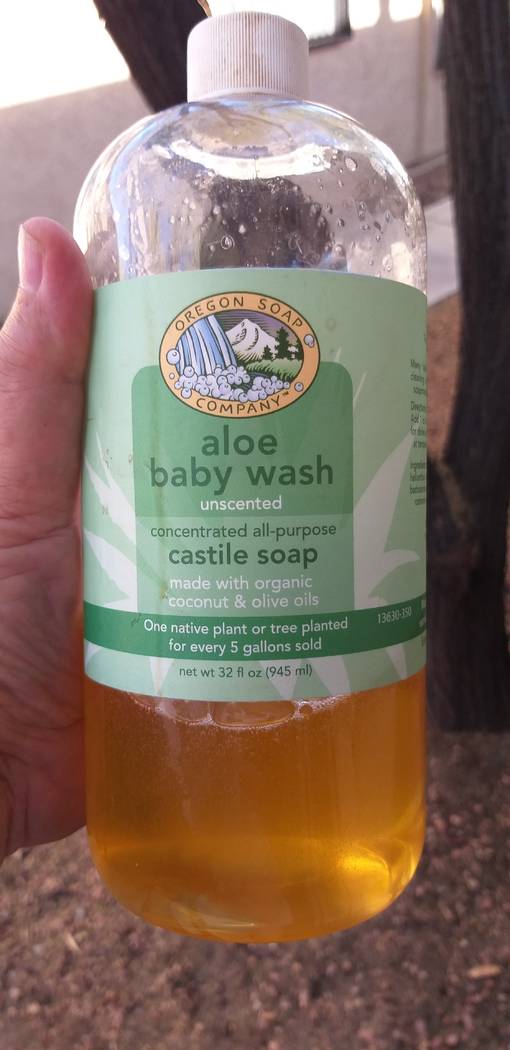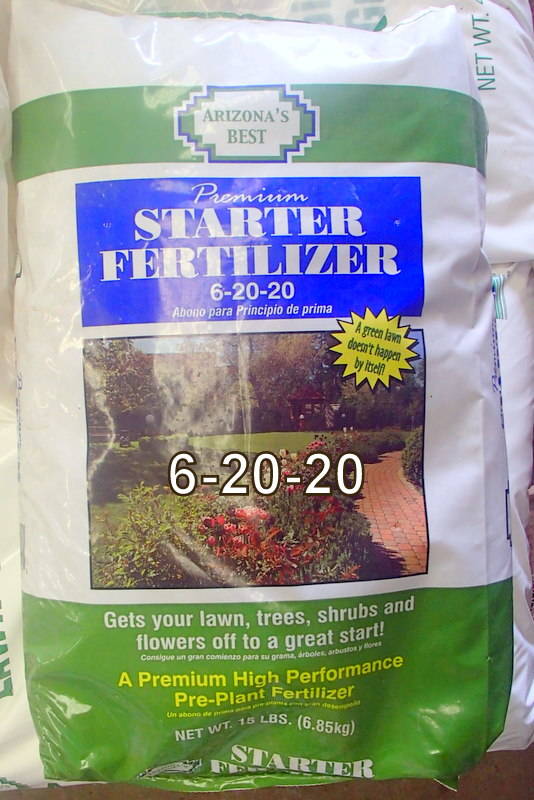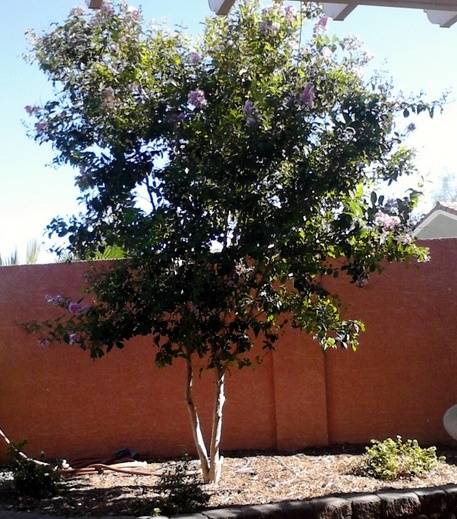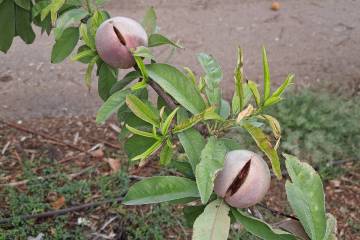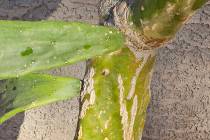Commercial topdressing products replace bagged steer manure
Q: We applied Red Star steer manure as topsoil during overseeding tall fescue three days ago. Is it OK to apply granulated fertilizer to this or should we wait longer?
A: So we are on the same page on this: You are spreading some seed on your tall fescue lawn to increase its density, thickening up some thin areas and maybe improving the look of your lawn because of some brown spots or dead areas. Once the seed is spread and fertilizer is applied, you are spreading a thin layer of steer manure as a “topdressing” (you are calling it “topsoil”) to improve the germination of the seed. The best time to do all this is from about mid-September to mid-October. It is getting late now.
Bagged steer manure was used in the past as a topdressing for lawns when overseeding. It was smelly but it worked well. Years ago, you knew it was fall overseeding time because of the steer manure smell in the neighborhood. Now there are commercial topdressing products available, but bagged steer manure still works.
In lawn seed germination, a rule to follow for good seed germination when overseeding lawns is good soil and seed contact. It is important that the seed applied is in contact with the soil after the application is done. The steer manure or topdressing was a blanket that pushed the seed down and helped keep the area moist.
Make sure the lawn is mowed as short as possible (for fescue I wouldn’t mow shorter than 1 inch) and any debris on the soil surface (thatch) is disturbed or removed. This is done with a dethatcher, power rake or verticutter. This can be done by hand using a garden rake if it’s a large area. For best results, you should see bare soil when you are finished.
After the lawn has been dethatched is the best time to apply a starter fertilizer for overseeding because it is high in phosphorus. This fertilizer is applied at this time so it lands on bare soil along with the seed used for overseeding.
The phosphorus is the part of the fertilizer you want on the bare soil because it doesn’t help the seed as much if it is applied after the job is finished. Remember this in the future. It’s the same fertilizer used in vegetable gardens during soil preparation prior to seeding or planting vegetable transplants. The final application is a thin layer of topdressing, in your case the steer manure.
Applying a starter fertilizer after it’s all finished is not the best but better than nothing. Go ahead and apply it. It’s not optimum but it will do some good as the seed is germinating and taking root.
Q: When using soap sprays for controlling insects, what do you use?
A: I mix the soap spray for insect control myself, and it becomes one of the tools I use when I see an insect infestation. Another one is an oil spray. Soap sprays work best on soft-bodied insects like aphids and gnats. Oil sprays work excellent on scale insects and insects trying to survive winter.
I use an unscented Castile soap sold as a baby shampoo that has been certified organic by one of the certifying bodies for the USDA. It is more expensive compared with liquid dishwashing soap, but I am more comfortable using it.
Does it work better than an inexpensive dishwashing liquid? Probably not. I just figured if it is certified as organic and used as a baby shampoo it should be safe to use on most plants and still kill the bugs. I use 3 tablespoons of it mixed in a gallon of water as recommended by Clemson University.
An alternative method is to buy one of the commercial brands of insecticidal soap sprays such as Safers. These insecticidal soaps (if it is used to kill insects it is technically an insecticide) are usually formulated with a decent soap or detergent that kills insects while keeping contaminants at a minimum. For this reason, I use unscented soaps with no other additives like hand lotions.
Laundry detergents are a no-no. They are too harsh to mix with water and spray on plants.
There is a misconception that insecticidal soaps can be sprayed anytime because they are safe. These types of sprays will kill any insect that is sprayed, good or bad. Their big advantage is once sprayed, they don’t stay long in the environment. When using insecticidal soaps as an insecticide, they must be sprayed more often for that very reason. Spray when there is a problem.
Some liquid soaps used as insecticidal sprays are made from yucca (Grow More’s EZ Wet, for instance) and can be sprayed the same day vegetables, herbs or flowers are harvested. These types of soaps are also used to commercially clean vegetables before they are sold.
Insecticidal soap sprays, the kind you buy or the kind you make, do affect plants. Some plants like portulaca, gardenias and Easter lilies may show some damage after being sprayed with insecticidal soaps. If you are unsure, spray a little of your formulation on a few leaves of an infested plant to find out before you commit to spraying the whole thing.
Q: I would like to plant a pomegranate tree this fall but I am worried that the weather is going to be cooling down soon. Do you think I missed my opportunity for planting, and should I wait until spring?
A: Just because it is getting colder doesn’t mean you can’t plant. Ideally, you want a few weeks of root growth in the fall after planting. The timing may not be optimum for root growth when soil temperatures are cold, but it will still work out. If you find a variety you like, get it in the ground.
Temperate plant roots (like pomegranate) grow best when soil temperatures are between 60 to 75 degrees, but they still grow even when soil temperatures are as low as 45 F. They just don’t grow as fast. Try to plant early enough so that there are four to five weeks of warm soil temperatures before the soil gets cold.
How do you estimate the soil temperature? The best way is to buy a soil thermometer for about $15 and measure for yourself but, otherwise, you can make a rough approximation. Soils are always a bit warmer than air temperatures.
Take the average air temperature over the past couple of weeks (low + high and divide by two) and add 5 degrees. Surface mulch, rock or woodchips conserve soil warmth in the fall and insulate the soil from the heat in the spring and summer months.
In my experience, using your sense of touch is accurate to within about 5 degrees F of temperatures ranging from the refrigerator (40 F) to the spa (105 F).
Fall planting is always superior to spring planting of winter-hardy plants.
The general rule of thumb as the amount of water to apply is a minimum of half the gallonage of the plant. So, if it is a 15-gallon plant, apply at least 7½ gallons of water each time.
I know the container does not hold 25 gallons. It’s just a rule of thumb. I would round that up to 10 gallons personally.
The amount to apply, if it is enough, is not as critical as how often to apply water. You always want to overapply water a little bit anyway to move salts out of the root area.
How often you water really depends on the soil but roughly twice, maybe three times, a week this time of year and after planting. Water once a week after it is established, and cover the soil with woodchips. Notice I said woodchips? This plant does not like rock covering the soil surface as a mulch. It should be planted with a soil mixed with half its volume with compost and the surface of the soil covered with woodchips.
Bob Morris is a horticulture expert and professor emeritus of the University of Nevada, Las Vegas. Visit his blog at xtremehorticulture.blogspot.com. Send questions to Extremehort@aol.com.



